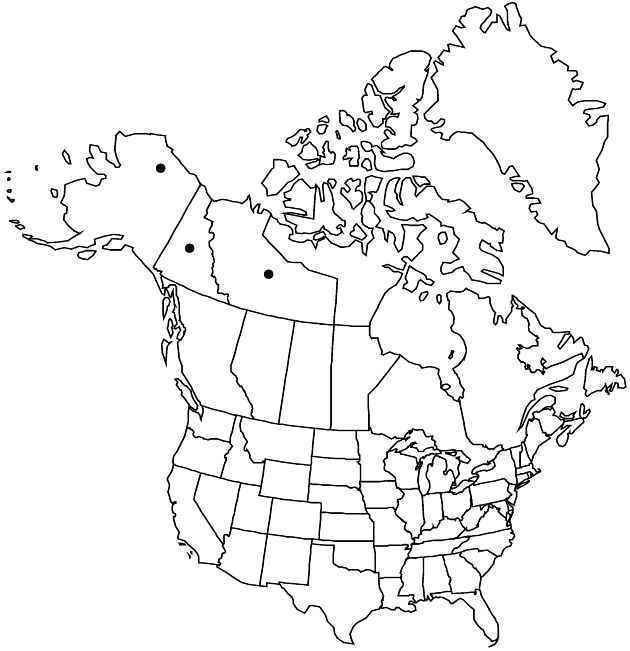Erigeron porsildii
Sida 21: 44. 2004.
Perennials, (2–) 10–20 (–25) cm; rhizomatous, fibrous-rooted, rhizomes horizontal or erect, sometimes branched, relatively short, sometimes resembling taproots. Stems erect, sparsely to moderately villous (hairs 0.5–1.6 mm), usually stipitate-glandular (hairs 0.05–0.4 mm). Leaves basal (persistent) and cauline; basal blades oblong-oblanceolate to narrowly obovate, 30–120 × (3–) 5–14 mm, margins entire (apices acute), faces densely hirsute to coarsely villous, sparsely stipitate-glandular to minutely glandular; cauline blades oblong-lanceolate to lanceolate, gradually reduced distally or nearly equal-sized (bases often subclasping). Heads 1. Involucres 6–10 × 12–20 mm. Phyllaries in ca. 2 series (purple at least at tips, narrowly lanceolate, equal, apically acuminate), densely hirsute, hirsuto-villous, or villous (hairs whitish, cross-walls not colored), sparsely stipitate-glandular to minutely glandular. Ray-florets 65–110; corollas white to lavender or blue, 13–17 mm (1.2–1.7 mm wide), laminae weakly coiling. Disc corollas 3.8–4.5 mm. Cypselae 2–2.5 mm, 2-nerved, faces sparsely strigose; pappi: outer of relatively long setae or scales, inner of 14–20 (–25) bristles. 2n = 36.
Phenology: Flowering (Jun–)Jul–Aug(–Sep).
Habitat: Cliffs and talus (often calcareous) slopes, shaley gravel, grassy ravines, dry tundra
Elevation: 600–2100 m
Distribution

N.W.T., Yukon, Alaska.
Discussion
Erigeron hultenii S. A. Spongberg was noted to be “closely allied to the polymorphic arctic-alpine species E. grandiflorus W. J. Hooker” (S. A. Spongberg 1973, p. 116) and to have a “close morphologic resemblance to some plants of E. grandiflorus from Alaska” [E. porsildii in the present sense] (p. 119). Plants corresponding to E. hultenii have not been recollected, and that taxon does not fit with any other known Alaskan species. Contrasts with E. porsildii exclude it from that species. Erigeron hultenii is not recognized formally herein.
Selected References
None.